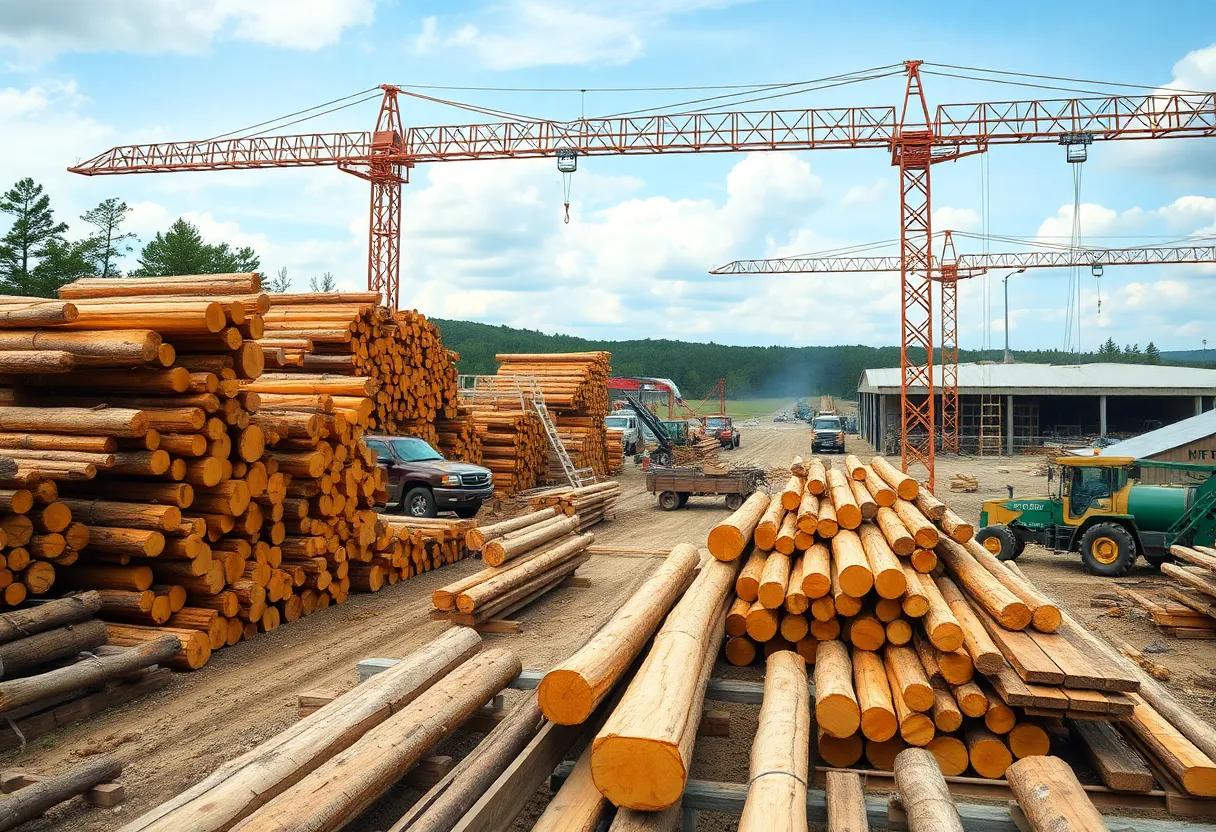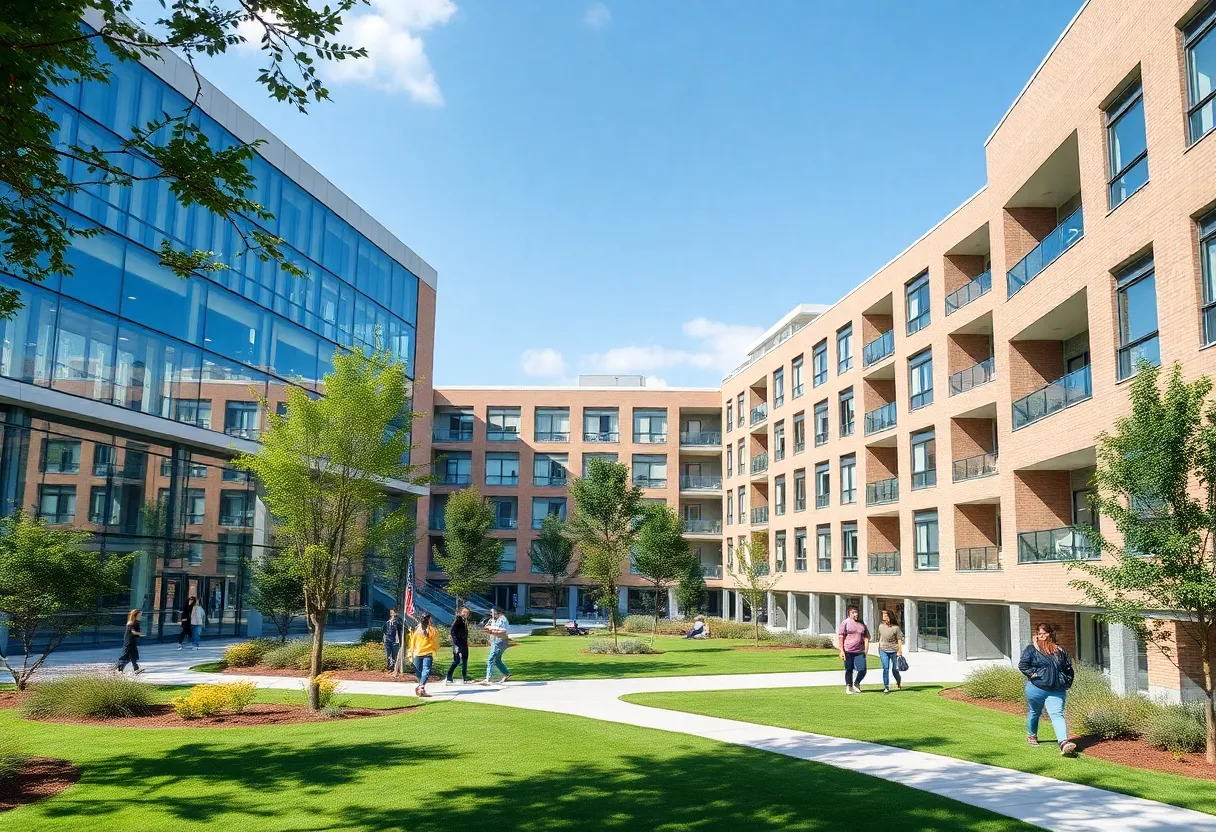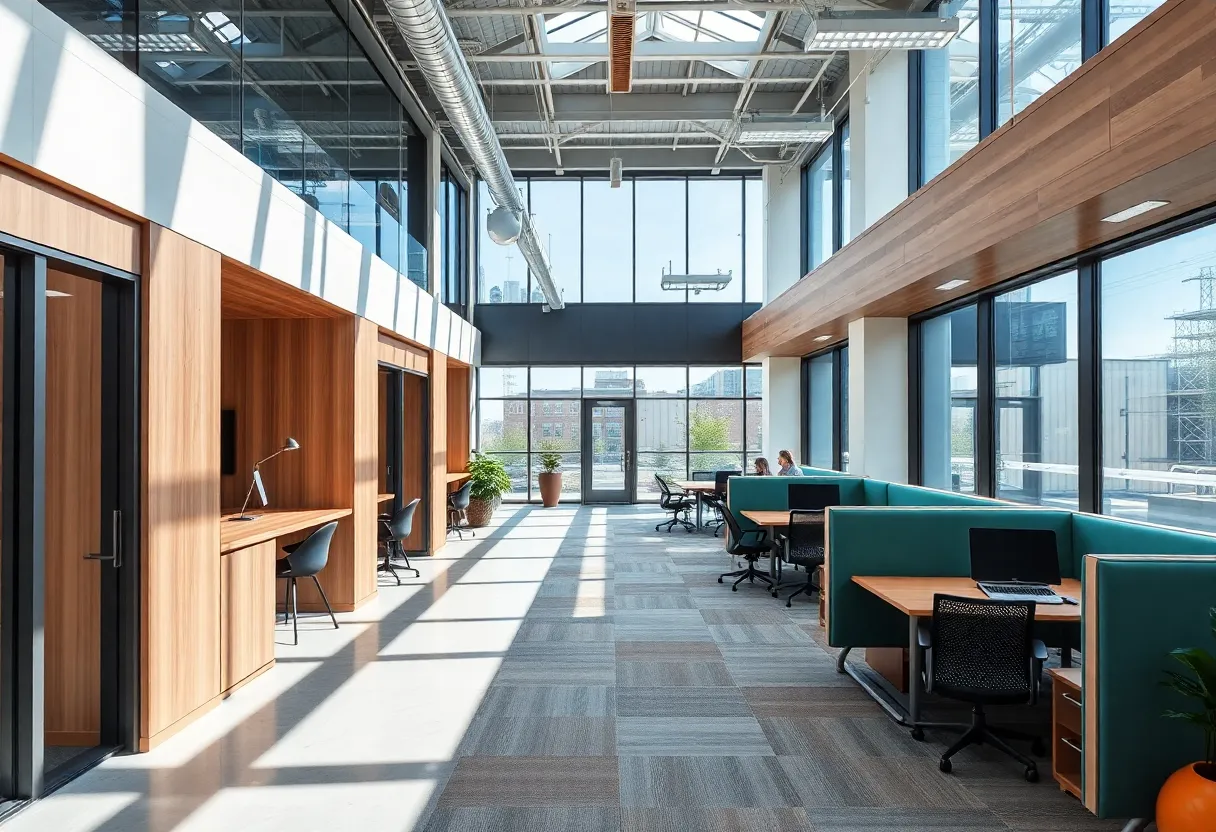News Summary
In the southeastern United States, efforts to increase domestic lumber supply are facing significant hurdles, particularly in Georgia and North Carolina. Regional mills struggle to meet soaring demand for housing and commercial projects, resulting in a 15% increase in timber prices. This situation complicates construction timelines and costs, pushing builders to seek alternative sourcing strategies amid regulatory challenges. Analysts recommend investing in domestic processing facilities to mitigate reliance on Canadian imports and stabilize the supply chain as residential builds are projected to increase by 12%.
Atlanta, Georgia: Domestic Lumber Supply Efforts Face Hurdles in Southeastern US
In the southeastern United States, particularly in states like Georgia and North Carolina, efforts to increase domestic lumber supply as an alternative to Canadian imports are encountering significant challenges. Regional mills are struggling to keep up with the growing demand for housing and commercial projects, leading to delays and a 15% price increase in timber. This situation is exacerbating pressures on the construction sector amid expanding mortgage funding and forecasted growth in residential builds.
The surge in demand stems from ongoing construction activities, with experts noting that current supplies from regional mills fall short of needs. For instance, builders in Georgia and North Carolina are experiencing delays in timber availability, which is directly impacting project timelines and costs. As a result, construction firms are turning to alternative strategies, such as sourcing from Appalachian forests, but these initiatives are being slowed by regulatory approvals and the need for sustainable logging practices.
Further complicating matters, recent expansions in mortgage funding across the Southeast are expected to drive even more building activity. This influx of funding is likely to heighten the lumber shortage, making it harder for developers to maintain schedules. Analysts suggest that investing in domestic processing facilities could help reduce dependency on imports, offering a long-term solution to stabilize the supply chain.
Amid these challenges, the industry is exploring innovative options like hybrid materials that combine local woods with recycled composites. These materials are gaining popularity as they provide a more reliable and environmentally friendly alternative. According to the Energy and Utilities Construction Report 2025, published October 17, 2025, residential builds in the region are projected to increase by 12%, which underscores the urgency for effective solutions to address the lumber shortfall.
Background context reveals that the shift away from Canadian imports is part of broader efforts to strengthen domestic production. However, factors such as limited mill capacity and environmental regulations are hindering progress. This has led to higher costs for builders, who must now factor in these delays and price hikes into their planning. The report emphasizes that without targeted investments, the southeastern US construction sector could face continued disruptions, potentially slowing economic growth in key areas like Georgia and North Carolina.
Overall, the situation highlights the need for coordinated action among stakeholders to enhance supply chains and adopt sustainable practices. By focusing on domestic resources and innovative materials, the region could mitigate these hurdles and support the anticipated expansion in construction projects.
To provide more depth, it’s important to understand how these challenges affect various stakeholders. For homebuilders in Atlanta and surrounding areas, the 15% price increase in timber means higher material costs, which could be passed on to buyers, potentially making housing less affordable. In North Carolina, commercial projects are also impacted, as delays in timber delivery push back completion dates and increase labor expenses. The Appalachian sourcing initiative, while promising, requires navigating complex regulatory frameworks to ensure compliance with sustainable practices, adding layers of bureaucracy that slow implementation.
Analysts point out that mortgage funding expansions are a double-edged sword. On one hand, they stimulate demand by making loans more accessible, fueling a 12% increase in residential builds as forecasted. On the other, they amplify the strain on already limited resources. Recommendations for investing in domestic processing facilities aim to create more resilient supply chains, reducing reliance on external sources and promoting economic self-sufficiency in the Southeast. Hybrid materials, which blend local woods with recycled composites, are emerging as a practical workaround, offering durability and eco-friendliness without fully depending on traditional lumber.
The broader implications for the construction industry include potential job creation if investments in facilities materialize, but also risks of project cancellations if shortages persist. The Energy and Utilities Construction Report 2025 provides a forward-looking perspective, stressing that addressing these issues promptly could lead to a more stable market. As the region adapts, ongoing monitoring of supply dynamics will be crucial to sustaining growth in housing and commercial sectors.
This overview encapsulates the current state of affairs in the southeastern US construction landscape, drawing directly from recent analyses to inform stakeholders and the public.
FAQ Section
Frequently Asked Questions
- Question: What challenges are efforts to bolster domestic lumber supply facing in the southeastern US? Answer: Efforts to bolster domestic lumber supply in place of Canadian imports are facing significant hurdles in the southeastern US.
- Question: Which states are reporting delays in timber availability? Answer: States like Georgia and North Carolina, key construction hubs, report delays in timber availability.
- Question: How much have timber prices increased? Answer: Prices are being pushed up by 15%.
- Question: What is underway for sourcing lumber? Answer: Innovative sourcing from Appalachian forests is underway, but regulatory approvals and sustainable logging practices are stalling progress.
- Question: What is expected to fuel more building activity? Answer: Mortgage funding expansions in the Southeast are expected to fuel more building activity.
- Question: What do analysts recommend? Answer: Analysts recommend investments in domestic processing facilities to reduce dependency.
- Question: What materials are gaining traction? Answer: Hybrid materials combining local woods with recycled composites are gaining traction.
- Question: What does the report forecast? Answer: The Energy and Utilities Construction Report 2025 forecasts a 12% increase in residential builds.
Key Features Chart
| Feature | Description |
|---|---|
| Price Increase | 15% in timber prices due to supply delays |
| Forecasted Growth | 12% increase in residential builds |
| Main Challenges | Regional mills unable to meet demand; regulatory hurdles in Appalachian sourcing |
| Innovations | Hybrid materials using local woods and recycled composites |
| Recommendations | Investments in domestic processing facilities |
Deeper Dive: News & Info About This Topic
Construction FL Resources
Higher Tariffs on Canadian Lumber Impact U.S. Forestry in the Southeast
Rising Lumber Prices in Madison Drive Up Construction Costs
Daito Trust secures JPY140 billion syndicated loan to refinance debt and back real‑estate expansion
U.S. Softwood Lumber Prices Hold Steady Amid Market Challenges
Author: Construction FL News
The FLORIDA STAFF WRITER represents the experienced team at constructionflnews.com, your go-to source for actionable local news and information in Florida and beyond. Specializing in "news you can use," we cover essential topics like product reviews for personal and business needs, local business directories, politics, real estate trends, neighborhood insights, and state news affecting the area—with deep expertise drawn from years of dedicated reporting and strong community input, including local press releases and business updates. We deliver top reporting on high-value events such as the Florida Build Expo, major infrastructure projects, and advancements in construction technology showcases. Our coverage extends to key organizations like the Associated Builders and Contractors of Florida and the Florida Home Builders Association, plus leading businesses in construction and legal services that power the local economy such as CMiC Global and Shutts & Bowen LLP. As part of the broader network, including constructioncanews.com, constructionnynews.com, and constructiontxnews.com, we provide comprehensive, credible insights into the dynamic construction landscape across multiple states.





